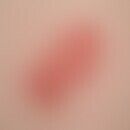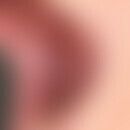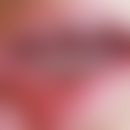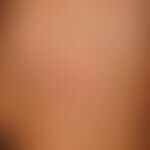Synonym(s)
Curved T-Plastic
HistoryThis section has been translated automatically.
Schulz, 1998
DefinitionThis section has been translated automatically.
Suture flap plastic surgery for covering skin defects using a combination of a triangular suture and a rotational flap to reduce the areas of skin to be mobilized, reduce flap tension and prevent flap necrosis.
General informationThis section has been translated automatically.
- One undermines the triangular excision defect in the area of the external angle. The short side of the triangle is to be extended laterally in the sense of a rotational lobe in a semi-curve. A corner suture, starting from the long incision line at the undermined angle, grasps the tip of the rotational flap subepidermally and ends as a backstitch suture in the opposite edge of the wound approx. 3 mm to the side of the first incision. The course of the scar is curved in a T-shape. The adjective "defect-reducing" describes the fact that the excision area is partially closed primarily and the residual defect is covered by the rotating flap which is smaller and under less tension.
- Indication: The technique is particularly suitable for the back of the hand. Caution! Risk of flap necrosis! Contrary to the general assumption, the skin of the back of the hand, although it can easily be lifted from the base in folds, has relatively small displaceable well vascularized areas. Therefore, in flap plasty without the curved T-suture technique, a split skin transplantation of the secondary defect would usually be necessary to prevent necrosis. Other areas of application are the outer and inner eyelid angle, the lateral nose slope and the retroauricular region.
LiteratureThis section has been translated automatically.
- Schulz H (1998) Rational methods of defect coverage in practice. In: Garbe C, Rassner G (Hrsg) Dermatology, Guidelines and quality assurance for diagnostics and therapy. Springer, Berlin Heidelberg New York, S. 538-541






